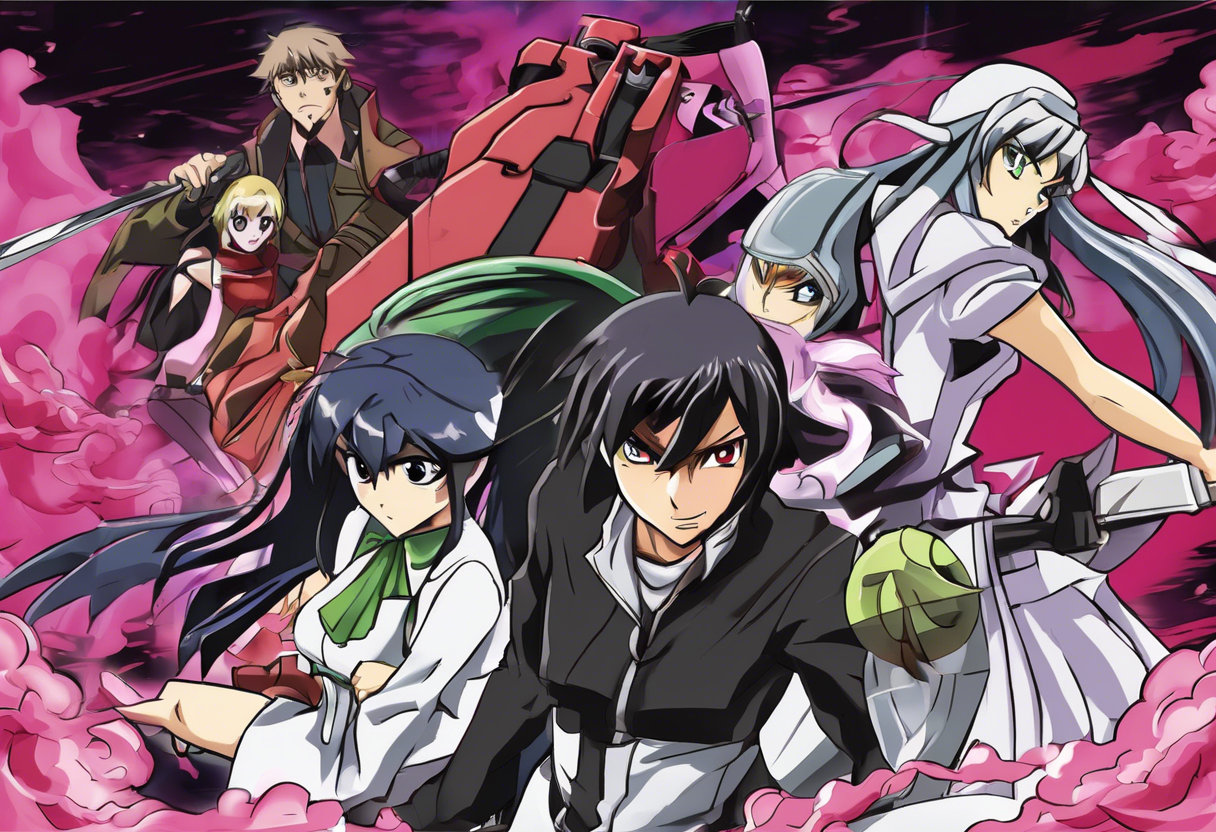Contents
Akame ga Kill Episode 5: Kill the Dream
Introduction
Akame ga Kill Episode 5, titled "Kill the Dream," is a pivotal installment in the anime series adapted from the manga of the same name by Takahiro and Tetsuya Tashiro. The episode was directed by Tomoki Kobayashi, with screenplay by Makoto Uezu, and produced by C-Station and White Fox. It initially aired on August 10, 2014. This episode stands out within its genre for its intense character development, emotional depth, and the harsh realities of the world it portrays.
Plot Summary
The episode begins with Tatsumi waking up from a dream where his deceased friends, Sayo and Ieyasu, tell him to move on and rely on his new friends, a message that troubles him deeply as he still grapples with their loss [1][4]. Upon waking, he finds Sheele asleep on the edge of his bed, who then informs him that she will be conducting his training. Their training session involves Tatsumi learning to swim in full armor, a challenging task that highlights Sheele’s strict but effective mentoring style.
Tatsumi’s curiosity about Sheele’s past leads to a revealing conversation where she shares how she became an assassin. Sheele’s story is one of necessity and self-discovery, as she realized her talent for killing after defending a friend from an abusive ex-boyfriend [5]. This backstory adds a layer of complexity to Sheele’s character, showing her as more than just a skilled fighter.
Following his training, Tatsumi attempts to use the Imperial Arms recovered from Headhunter Zanko but is rejected by it. Najenda provides him with a book detailing all known Imperial Arms, instructing him to memorize it. Tatsumi’s hope of finding an Imperial Arms that could revive the dead is a recurring theme, driven by his desire to save his friends. However, Bulat and Akame must disillusion him, emphasizing that such a dream could become a weakness [4][5].
That night, Tatsumi visits the graves of Sayo and Ieyasu to bid them a final farewell. Sheele accompanies him, offering comfort as he comes to terms with his loss. This moment is crucial for Tatsumi’s character development, as he begins to accept the reality of his friends’ deaths and the harsh world he now inhabits.
The episode also explores Leone’s character as she and Tatsumi go on patrol in the capital. They visit her old neighborhood, where Leone’s popularity is evident until a group of men chase them, seeking money. In the ensuing confusion, Tatsumi gets separated from Leone but is fortunate to be found by Seryu Ubiquitous, an Imperial Guard. Seryu introduces herself and her Imperial Arms, Coro, a cute but deadly dog-like creature. After helping Tatsumi find his way back, Seryu leaves to feed Coro, marking an encounter that will have future implications [2][4].
Themes and Symbolism
"Kill the Dream" delves into several central themes that are pivotal to the series. One of the most prominent is the theme of loss and acceptance. Tatsumi’s dream and subsequent visit to his friends’ graves symbolize his struggle to come to terms with death and the impermanence of relationships. This theme is reinforced by Sheele’s backstory, which highlights the harsh realities of their world where survival often necessitates violence.
The episode also explores the theme of identity and purpose. Sheele’s narrative about becoming an assassin shows how individuals find their roles in life, often through circumstances beyond their control. This theme is further underscored by Tatsumi’s own journey, as he navigates his new life as a member of Night Raid and grapples with the moral implications of his actions.
The use of Imperial Arms as a plot device symbolizes the power and the cost of such abilities. The rejection of Tatsumi by the Imperial Arms and the danger of his dream of reviving the dead serve as reminders of the consequences of seeking power without understanding its true nature.
Cultural Impact
"Kill the Dream" has had a significant cultural impact, particularly within the anime community. The episode’s emotional depth and character development have resonated with audiences, making it a memorable installment in the series. The portrayal of complex characters and the exploration of mature themes have influenced other anime series in handling similar narrative arcs.
The episode has also been referenced in various forms of media, including fan art and fan fiction, where characters like Sheele and Tatsumi are often featured. The emotional resonance of the episode, especially the scenes involving Tatsumi’s goodbye to his friends, has become a talking point among fans and critics alike.
Critical Reception
Upon its release, "Kill the Dream" received positive reviews from critics and audiences for its emotional intensity and character development. The episode was praised for its ability to balance action and drama, creating a compelling narrative that kept viewers engaged.
However, some critics noted that the episode’s pacing could be uneven at times, with certain scenes feeling rushed. Despite this, the overall reception was favorable, with many highlighting the episode’s impact on the series’ overall storyline and character arcs.
In subsequent years, the episode has continued to be well-regarded for its contribution to the series’ narrative and its exploration of mature themes. It remains a standout episode in the series, often cited as one of the most emotionally resonant.
Legacy
"Kill the Dream" continues to be an influential episode in the context of Akame ga Kill and anime as a whole. It has inspired filmmakers and writers to tackle complex themes and character development in their own works. The episode’s portrayal of loss, identity, and the consequences of power has set a high standard for narrative depth in anime.
The episode’s legacy is also evident in its enduring popularity among fans. It remains a favorite among viewers of the series, and its emotional impact continues to resonate with new audiences discovering the series. As a part of cinematic history, "Kill the Dream" stands as a testament to the power of storytelling in anime, highlighting the medium’s ability to explore deep themes and evoke strong emotions.
References
- https://akamegakill.fandom.com/wiki/Episode_5
- https://animevice.fandom.com/wiki/Episode_5_(Akame_ga_Kill!)
- https://www.renegadepopculture.com/home/fresh-takes-akame-ga-kill-episode-5-kill-the-dream
- https://theadultswimsquad.wordpress.com/2015/09/13/akame-ga-kill-episode-recap-kill-the-empty-dream/
- https://otakuauthor.com/akame-ga-kill-episode-5-kill-the-empty-dream/







